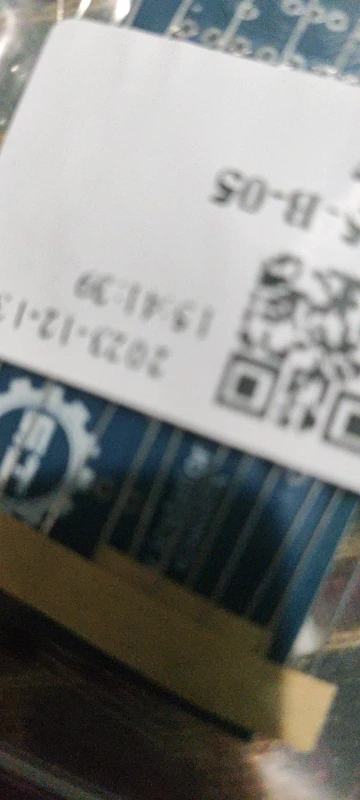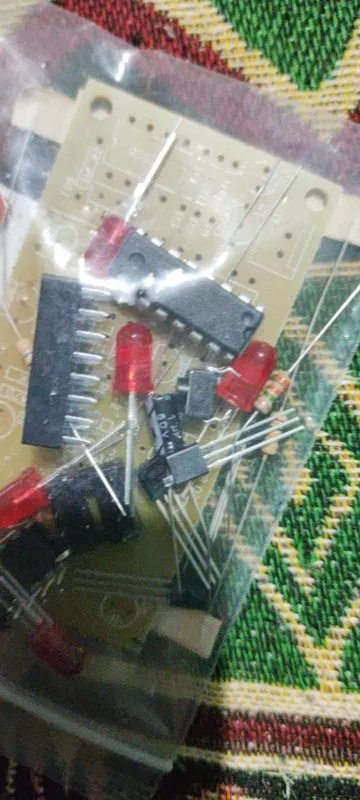Electronic Dice Circuit
FREE SHIPPING (limited time only)
Couldn't load pickup availability
The electronic dice—a beginners soldering project...
A cool introduction to the world of electronics!
The Electronic Dice Kit is a hands-on STEM project that lets you build your very own working electronic dice. Assemble the circuit, press the button, and watch the LEDs flash and settle on a random number between 1 and 6—just like a real dice roll.
Perfect for beginners, this kit teaches electronics, soldering, and circuit design while giving you a fun, functional device you can actually use in board games, classrooms, or STEM clubs. With clear step-by-step instructions and easy through-hole components, it’s an ideal first kit for kids, teens, or adults curious about electronics.
This kit includes a wide variety of components and has plenty of soldering steps, giving you valuable practice for future electronics projects. It's also an ideal kit for educational settings (bulk discounts are available, Contact Us to find out more). Build it. Play with it. Show it off. The perfect mix of fun, learning, and hands-on STEM.
👉 Order today and start your journey into electronics with a project that’s simple, practical, and exciting. Check out the dropdown sections below for more product information.
Share this product with a friend
What's Included?
What's Included?
Includes all components required to build the Electronic Dice:
- Printed circuit board (PCB)
- CD4017 decade counter chip
- NE555 timer chip
- 8-pin IC socket
- 16-pin IC socket
- Resistors:
- 1 kΩ
- 3.3 MΩ
- 470 Ω (×3)
- 4.7 MΩ
- 10 MΩ
- 10 kΩ (×9) - Capacitors:
- 1 µF electrolytic
- 104P ceramic - Transistors:
- S8050 (×3)
- S8550 (×2) - 5 mm red LEDs (×7)
- Push button switch
- Power connector
Refer to the image gallery for photographs of each component.
Learning Outcomes and Benefits
Learning Outcomes and Benefits
Circuit basics: Learn how electricity flows through resistors, capacitors, LEDs, and transistors to create a working device. Our detailed instruction manual includes the circuit diagram and a complete description of how it all works.
IC fundamentals: Discover how the NE555 timer generates pulses and how the CD4017 decade counter turns them into random dice rolls.
Practical soldering: Gain confidence with through-hole soldering, the most beginner-friendly way to assemble electronic circuits.
Randomness in electronics: Explore how electronic circuits simulate chance, linking physics and math to probability.
Visual outputs: See how seven LEDs can be arranged to mimic dice face patterns for numbers 1 through 6.
Problem-solving: Build troubleshooting skills by checking polarity, fixing cold joints, and debugging non-working circuits.
Confidence and creativity: Finish with a working dice you can use in board games or show off at science fairs.
STEM inspiration: An engaging introduction to electronics, coding logic, and circuit design, sparking curiosity for more advanced projects.
Frequently Asked Questions (FAQ)
Frequently Asked Questions (FAQ)
Q: What does the electronic dice actually do?
A: Press the button and the LEDs flash before stopping at a number between 1 and 6, just like rolling a real dice.
Q: Does the electronic dice generate a truly random result?
A: Yes. We have performed experiments on these dice to confirm that they deliver a truly random result. You can view the experimental report including all the relevant statistics at the following link: Electronic Dice Randomness Experiment Report.
Q: Why build an electronic dice?
A: It’s a fun, practical way to learn electronics, soldering, and probability. Plus, you end up with a working gadget you can actually use in games.
Q: Who is this kit best for?
A: Beginners (ages 12+) who want their first taste of electronics, students working on STEM projects, or hobbyists looking for a quick build.
Q: Is this just a toy?
A: No—it’s a real, functional circuit that demonstrates how electronics can simulate randomness. It’s both a learning tool and a fun device to use.
Q: Can I use it in place of a dice for games?
A: Yes! It works just like rolling a dice and is perfect for board games, classroom demonstrations, or show-and-tell projects.
Product Specifications
Product Specifications
Dimensions (approx., when completed):
- Length: 6.8 cm
- Width: 3.5 cm
- Height: 1.0 cm
- Weight: 15 grams
PCB Type: All through-hole components (beginner friendly).
Power Supply: 4.5–5.0 V (via 3 × AA batteries, USB power, or other DC source – not included).
Assembly and Usage Info
Assembly and Usage Info
Anyone can build this Electronic dice kit following our detailed step-by-step instruction manual which can be downloaded from the link below. The password to open the manual was sent to the same email that you placed your order from. Can't find it? Just Contact Us!
Download: Electronic Dice Kit Instruction Manual
Skill Level: Beginner
Age Rating: 12+ (adult supervision required for under 16's)
Assembly Time: Typically 1-3 hours
Tools and Materials Required
Tools and Materials Required
Tools required for this kit
- Soldering iron
- Solder wire
We sell these items as a bundle for just €25.95 (or currency equivalent) which saves 10 percent! Just click the link below to select your countries plug type and add to your order.
SOLDERING IRON & WIRE BUNDLE
Of course, you only need to buy the tools once; you'll use them again and again for your future electronics projects!
GET THE TOOLS FREE!!!
Our Electronics Kit Bundles include tools completely FREE...
Click to view Bundles
Links and References
Links and References
Our blogs & videos related to electronics kits:
Ultimate Guide to Electronics Kits
Youtube video: Tools, tips and tricks for soldering electronics kits
Shipping and Warranty Info
Shipping and Warranty Info
Shipping Information
Orders are processed for dispatch within 1–2 business days. Typical delivery times following dispatch for this product, depending on region are:
- US: 5-8 days
- UK: 5-8 days
- EU: 6-13 days
- Canada: 7-14 days
- Australia: 7-14 days
All orders are shipped with tracking, where available. Please refer to our Shipping Policy page for further detail.
Warranty & Satisfaction Guarantee
All electronics kits come with a 14-day satisfaction guarantee. If you're not happy with your purchase, contact us and we’ll arrange a refund or replacement — no hassle. Please note that to qualify for a replacement or refund, kits must be in their original, unused condition. Please refer to our Returns and Refunds policy for more information.
Packaging
We aim to minimize waste while protecting your order. All electronic kits are securely packaged in padded mailing bags containing anti-static ESD bags and/or rigid plastic boxes (depending on the product) to ensure the safety of the electronic components. An example of electronics kit packaging can be viewed HERE. If you're purchasing this item as a gift and would rather that it was in a box, we also sell quality gift boxes at the following link: Quality Gift boxes.
Ships from: International Warehouse
View full details






















I had a soldering iron in the tool box for decades and don't think I ever used it once, so I was intrigued when I seen this little electronics project while shopping for a present on here for someone. It is very cheap so I bought it to give it a go and really enjoyed putting it together and it worked perfectly. Loads of soldering practise in this little kit, well worth it!
As shown in the photo.
Good price.
Arrived very fast.
Need to arm it and see how it works.
All good thank you



























